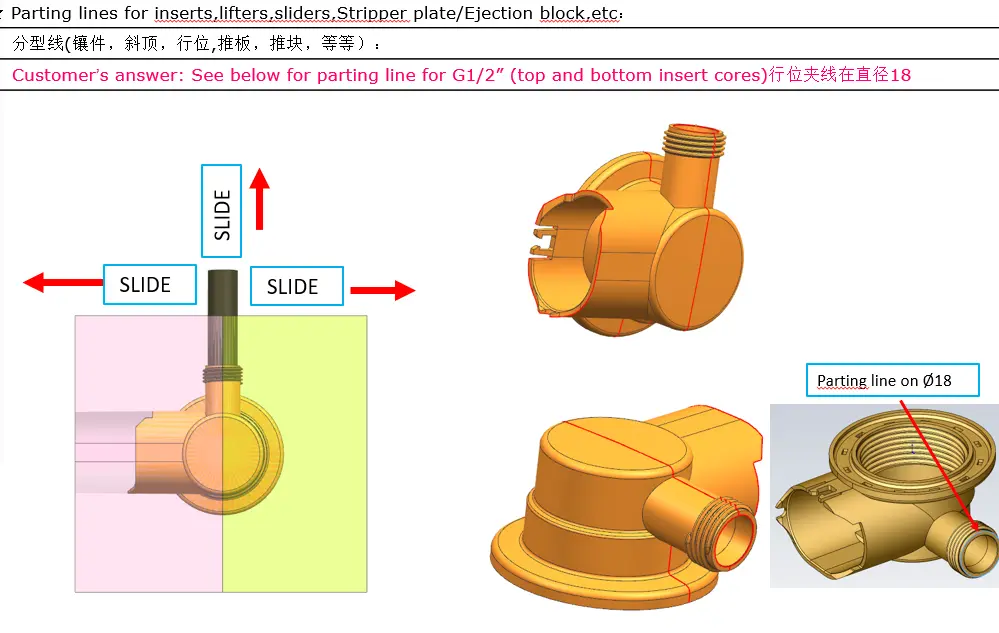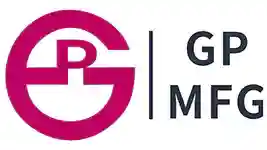What is DFM?
Design for Manufacturability (DFM) is not a buzzword, it’s a fundamental approach to product design and development. At its core, DFM is about creating products with manufacturing in mind right from the start. It’s a proactive strategy that aims to eliminate design flaws, reduce production costs, and optimize efficiency.
Just like in a jigsaw puzzle, DFM is the instruction manual for the puzzle without excessive trimming or adjustments. In manufacturing, these puzzle pieces represent components and processes, and DFM allows components to fit together seamlessly, reducing waste and saving valuable time.

Why DFM is Crucial in Mold Manufacturing
Now, you might wonder why DFM is particularly vital in mold manufacturing. Well, molds are the heart and soul of many industries, including automotive, electronics, and packaging. They are responsible for shaping and forming a wide range of products, from car parts to consumer electronics.
In mold manufacturing, precision is paramount. Even the tiniest design flaw can lead to defective products and costly production delays. DFM acts as a guiding light, illuminating the path toward flawlessly designed molds.
Consider a scenario where a mold designer fails to account for the cooling channels in a plastic injection mold adequately. Without efficient cooling, the molding process becomes inefficient, leading to longer cycle times and potential defects. DFM, when implemented correctly, ensures that such oversights are rare.
DFM also plays a key role in cost management. Costs in mold manufacturing often run into the hundreds of thousands of dollars. With DFM, cost-effective solutions are designed to reduce expenses while maintaining quality.
In essence, DFM is not just a tool or a technique; it’s a mindset that permeates every stage of mold manufacturing, from initial design to the final product. Its importance lies in its ability to foster effective communication, thorough design practices, and efficient manufacturing processes.
The Key Aspects of DFM
Mold Structure and Configuration
In the realm of mold design and manufacturing, the intricacies of mold structure are paramount. DFM begins by showcasing the details of the mold’s structure.
- The number of molds required.
- The type of mold necessary for the project.
- Surface specifications of the product to be molded.
- Initial placement considerations.
- Clamping line positioning both before and after mold production.
- The path the product will take as it enters the mold.
- Mold line orientation and clamping line details.
- Ejector positioning.
- Use of inserts.
- Angle of inclination.
- Direction of water flow within the mold, and more.
DFM aims to make these technical intricacies accessible, even to those unfamiliar with mold design. Let’s break it down further.
Example: Imagine you’re designing a mold for a plastic toy. DFM would provide detailed information on how many parts the mold should consist of, what type of mold (e.g., injection mold) is suitable, and where the parting line should be placed for optimal results. It’s like having a blueprint for creating the perfect mold for your toy.
Identifying Problematic Areas
Although DFM helps to simplify the mold design process, it has a lot of unavoidable problems in the mold design.
Sharp corners in the product design that might lead to steel book marks during mold production.
- Imbalanced glue distribution in the product.
- Product positioning issues.
- Ejection angles.
- Shrinkage in columns.
- Thickness of support structures, among others.
Example: Suppose you’re creating a mold for a complex plastic product with sharp edges. DFM would identify these sharp corners as potential trouble spots, prompting you to make design adjustments to ensure the mold’s longevity and the product’s quality.
Identifying Problematic Areas
Although DFM helps to simplify the mold design process, it has a lot of unavoidable problems in the mold design.
Sharp corners in the product design that might lead to steel book marks during mold production.
- Imbalanced glue distribution in the product.
- Product positioning issues.
- Ejection angles.
- Shrinkage in columns.
- Thickness of support structures, among others.
Example: Suppose you’re creating a mold for a complex plastic product with sharp edges. DFM would identify these sharp corners as potential trouble spots, prompting you to make design adjustments to ensure the mold’s longevity and the product’s quality.
Injection Molding Challenges
In the world of injection molding, achieving perfection is the ultimate goal. However, several shortcomings can plague the process. DFM is a valuable tool for identifying and mitigating these issues.
- Surface shrinkage during injection molding.
- Entrapped air within the product.
- Streamlines.
- Bonding lines, and more.
DFM helps pinpoint these vulnerabilities and suggests solutions to ensure a smooth injection molding process.
Example: Imagine you’re manufacturing intricate plastic parts through injection molding. DFM would detect potential problems like surface shrinkage and air trapping during the molding process. It would then guide you on how to modify the design or process to eliminate these issues, resulting in high-quality products.
Training and Industry Standards
DFM is not just a set of guidelines; it’s a comprehensive approach that incorporates industry standards and best practices. This includes gathering information about the mold industry, staying updated on design standards, and applying this knowledge during the design and manufacturing process. DFM ensures that mold designers and manufacturers are well-equipped to create molds that meet or exceed industry expectations.
Example: You’re a mold designer undergoing DFM training. This training exposes you to the latest industry standards, design techniques, and case studies. Armed with this knowledge, you’re better prepared to create molds that adhere to the highest quality and efficiency standards.
DFM in Action
Communication and Consultation
One of the primary roles of DFM is to serve as a bridge for communication and consultation. When a new mold project is initiated, DFM comes into play right from the beginning. It involves discussions and consultations with the customer to understand their specific mold design requirements and specifications. This early engagement ensures that the mold design aligns perfectly with the customer’s needs.
Example: You are a mold designer responsible for creating custom molds for your customer’s unique products. Analyze their design drawings through DFM and gather insights into their needs. This collaborative approach prevents misunderstandings and sets the stage for a successful mold design.
Preventing Production Problems
DFM isn’t just about creating molds; it’s about preventing problems in the production process. By thoroughly understanding the customer’s requirements and utilizing DFM principles, mold designers can preemptively identify potential production issues. This proactive approach saves time, resources, and, most importantly, avoids costly disruptions in the manufacturing process.
Example: Your company specializes in molding automotive parts. Through DFM, you identify that a particular design feature in the client’s specifications may lead to production delays due to complex mold requirements. By addressing this issue early on, you prevent costly downtime and ensure smooth production.
Cost Reduction Through DFM
Cost Reduction Through DFM
Cost-efficiency is a key consideration in any industry. DFM plays a crucial role in reducing costs associated with mold design and manufacturing. By streamlining the design process, minimizing design revisions, and preventing production hiccups, DFM contributes significantly to cost reduction without compromising quality.
Example: Your manufacturing facility is under pressure to reduce costs while maintaining product quality. DFM principles guide your mold design process, helping you avoid costly design changes, minimize material wastage, and optimize production efficiency. This not only saves money but also enhances your competitive edge.
How to Implement DFM Successfully
Early Collaboration: Designers, engineers and production specialists must work together from the beginning of a project. This collaboration ensures that design decisions take into account manufacturing feasibility and efficiency.
Design Simplification: Simplicity is often the key to successful DFM. Complex designs can lead to complications in manufacturing. Designers should aim to simplify product structures without compromising functionality.
Material Selection: The choice of materials is critical in mold manufacturing. DFM emphasizes selecting materials that are readily available and easy to work with. Compatibility with the manufacturing process is paramount.
Prototyping and Testing: Before mass production, prototyping and testing are essential steps in DFM. Prototypes allow for the identification of potential issues and the fine-tuning of designs.
Cost Analysis: A thorough cost analysis should be part of DFM. This includes assessing the cost of materials, labor, and any potential rework. Cost-effective design choices should be prioritized.
Design for Assembly (DFA): DFA is a subset of DFM that focuses on making products easy to assemble. It reduces assembly time and minimizes the risk of errors.
Tolerance Analysis: Precision is vital in mold manufacturing. Tolerance analysis ensures that components fit together accurately, minimizing the chances of defects.
Documentation and Communication: Clear documentation of design decisions and communication among team members are essential in DFM. This helps in maintaining consistency and avoiding misunderstandings.
By following these steps diligently, mold manufacturers can ensure that their designs are not just functional but also optimized for efficient production.
Design for Manufacturability (DFM) is more than just a buzzword in the mold industry – it’s a critical component that bridges the gap between imagination and reality.
From mold structure to troubleshooting injection molding challenges, DFM ensures a smooth journey from concept to creation. Its ability to communicate and consult with customers sets the stage for successful mold production, minimizing errors, and maximizing efficiency.
So the next time you begin a mold making program, contact us for a DFM analysis of your efforts to create a flawless final product.




